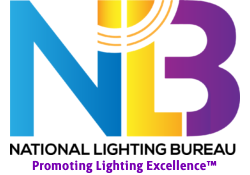Case Histories: Industrial/Warehousing
Lighten Up for Higher Quality, Greater Profits
A plant manager’s obsession with making a company profitable usually is focused on two things: increasing productivity and cutting costs.
Energy conservation is one popular way of trimming expenses because of its obvious connection with helping the environment while keeping hard-earned profits in the owner’s pocket. When an electric analyst calls to talk to the plant manager about fantastic savings through energy conservation, it’s usually worthwhile finding out some of the details. After examining the plant, a conversation between the analyst and the plant manager probably would go something like this:
ANALYST: My rough calculation is that you consume about $10,000 each year for the lighting you need for your operators to make widgets. I think we probably can cut your lighting bill by five or six hundred percent.
PLANT MANAGER: That would mean that for every dollar I spend on lighting, the lighting would give me $5 back?
If you have had this experience, you probably thanked the lighting consultant and politely but quickly showed him the door. In fact, you were wrong to do so; savings of 500% and higher are relatively commonplace, except that they are usually not talked about in those terms.
Consider the case of Superior Die Set Corporation Oak Creek, Wisconsin. Their lighting system operation and maintenance (O&M) costs were reduced 45%, from $3,896 per year to $2,148 per year; and their savings totaled of $44,584, taking productivity and quality into consideration for an actual annual reduction of 1,144.4%.
Measuring the cost of lighting in terms of the energy it consumes misses the point. Lighting is not installed to consume energy. Lighting is for people, to help them perform their visual tasks at optimal efficiency; i.e., peak productivity. If the plant has a workforce of 100 people, each averaging about $25,000 per year, a 1% productivity gain or loss would have a price tag of $25,000. It could be said that a lighting system that fails to deliver a 1% productivity improvement costs the company that $25,000 each year, over and above the routine O&M costs.
Employee Performance in the Spotlight
To achieve everything that improved lighting can offer, start by asking the question, “Why was lighting installed here in the first place?”
For Superior Die Set, the answer was obvious: to improve productivity and reduce errors. In their case, the productivity improvement derived from better lighting was worth $37,460 annually. Error reductions were also significant, but the value of prevented errors ranged so greatly that Superior’s management preferred not to set a specific amount. They did conclude that better lighting helped reduce equipment downtime, saving $5,376 per year. Absenteeism fell because operators were subjected to less glare and, accordingly, fewer headaches. Security was enhanced as well. The best part was that the total cost of modifications was just $2,980.
Once it is determined why light is used, a comprehensive lighting system audit should be conducted. Rather than attempting this alone, an audit is a job for a lighting professional. Not just any lighting professional will do: an individual is needed who understands the relationship between light and people–who knows how to achieve what the National Lighting Bureau calls High-Benefit Lighting®. The National Lighting Bureau is a 22-year-old organization formed to provide effective guidance materials to help companies make important decisions about lighting.
Once the audit is complete, the lighting consultant should be able to identify several strategies that can deliver benefits from improved lighting. Most importantly, this includes helping people get their jobs done better, faster, and with fewer errors. Lighting energy conservation is a favorite target for many “bean counters” because it can be calculated so precisely.
Productivity cannot be projected with as much precision. Error reduction can not be projected in that way; nor can insurance savings, accident avoidance, reduced absenteeism, etc., since each of these factors depends on a major human component. Even so, a lighting consultant should be able to determine the range of benefits that are likely.
Even when energy reduction is a major concern, quality still must be considered, and this is something that the accounting people need to consider. If a strategy designed to reduce energy consumption also reduces productivity, every energy dollar saved could mean $10, $20 or more wasted because of lost productivity.
The National Lighting Bureau is a not-for-profit educational organization funded by private industry, trade organizations and government agencies.
This article originally appeared in the June 1998 issue of MAN-Modern Application News.
